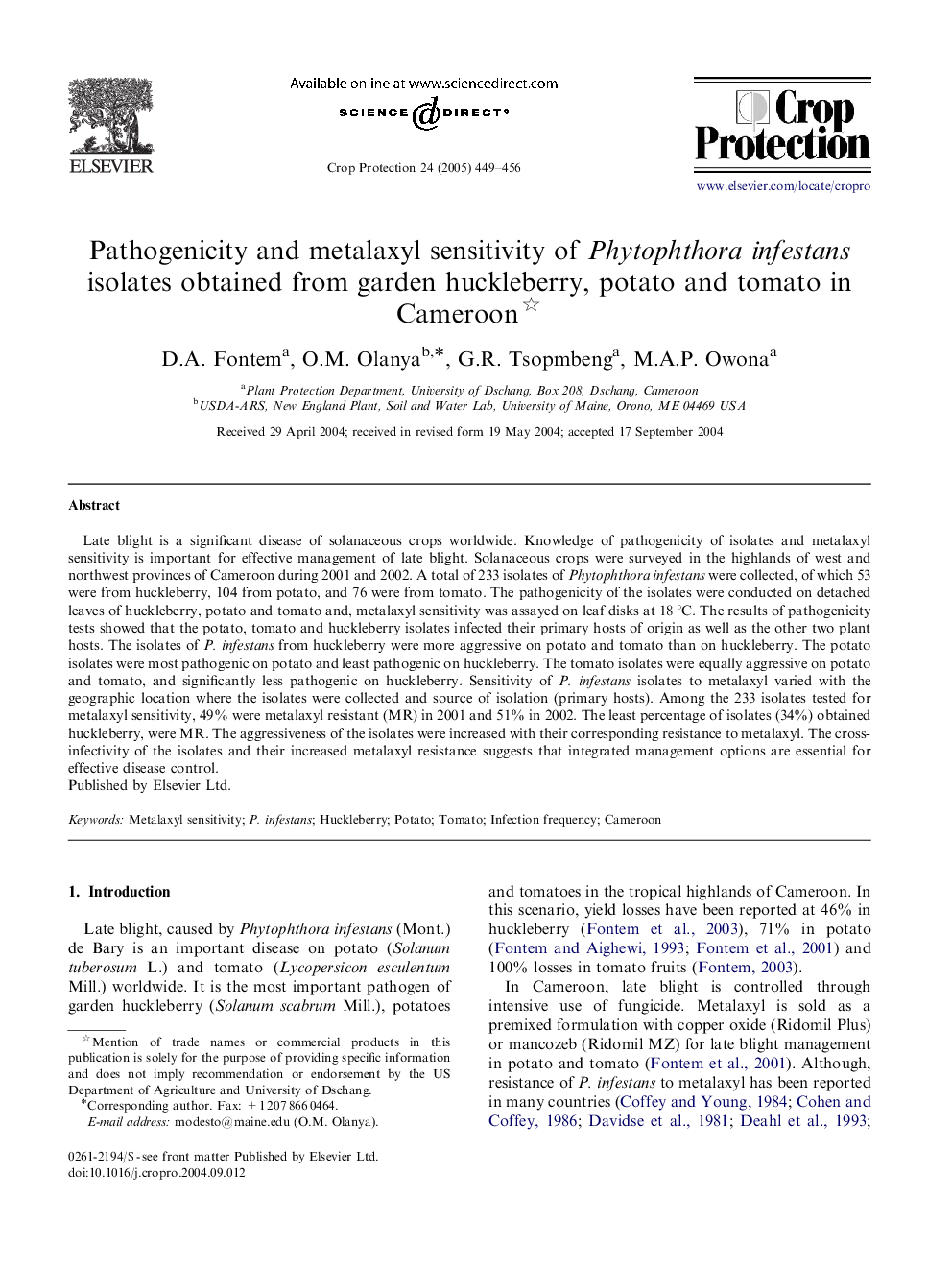| Article ID | Journal | Published Year | Pages | File Type |
|---|---|---|---|---|
| 9473147 | Crop Protection | 2005 | 8 Pages |
Abstract
Late blight is a significant disease of solanaceous crops worldwide. Knowledge of pathogenicity of isolates and metalaxyl sensitivity is important for effective management of late blight. Solanaceous crops were surveyed in the highlands of west and northwest provinces of Cameroon during 2001 and 2002. A total of 233 isolates of Phytophthora infestans were collected, of which 53 were from huckleberry, 104 from potato, and 76 were from tomato. The pathogenicity of the isolates were conducted on detached leaves of huckleberry, potato and tomato and, metalaxyl sensitivity was assayed on leaf disks at 18 °C. The results of pathogenicity tests showed that the potato, tomato and huckleberry isolates infected their primary hosts of origin as well as the other two plant hosts. The isolates of P. infestans from huckleberry were more aggressive on potato and tomato than on huckleberry. The potato isolates were most pathogenic on potato and least pathogenic on huckleberry. The tomato isolates were equally aggressive on potato and tomato, and significantly less pathogenic on huckleberry. Sensitivity of P. infestans isolates to metalaxyl varied with the geographic location where the isolates were collected and source of isolation (primary hosts). Among the 233 isolates tested for metalaxyl sensitivity, 49% were metalaxyl resistant (MR) in 2001 and 51% in 2002. The least percentage of isolates (34%) obtained huckleberry, were MR. The aggressiveness of the isolates were increased with their corresponding resistance to metalaxyl. The cross-infectivity of the isolates and their increased metalaxyl resistance suggests that integrated management options are essential for effective disease control.
Keywords
Related Topics
Life Sciences
Agricultural and Biological Sciences
Agronomy and Crop Science
Authors
D.A. Fontem, O.M. Olanya, G.R. Tsopmbeng, M.A.P. Owona,
